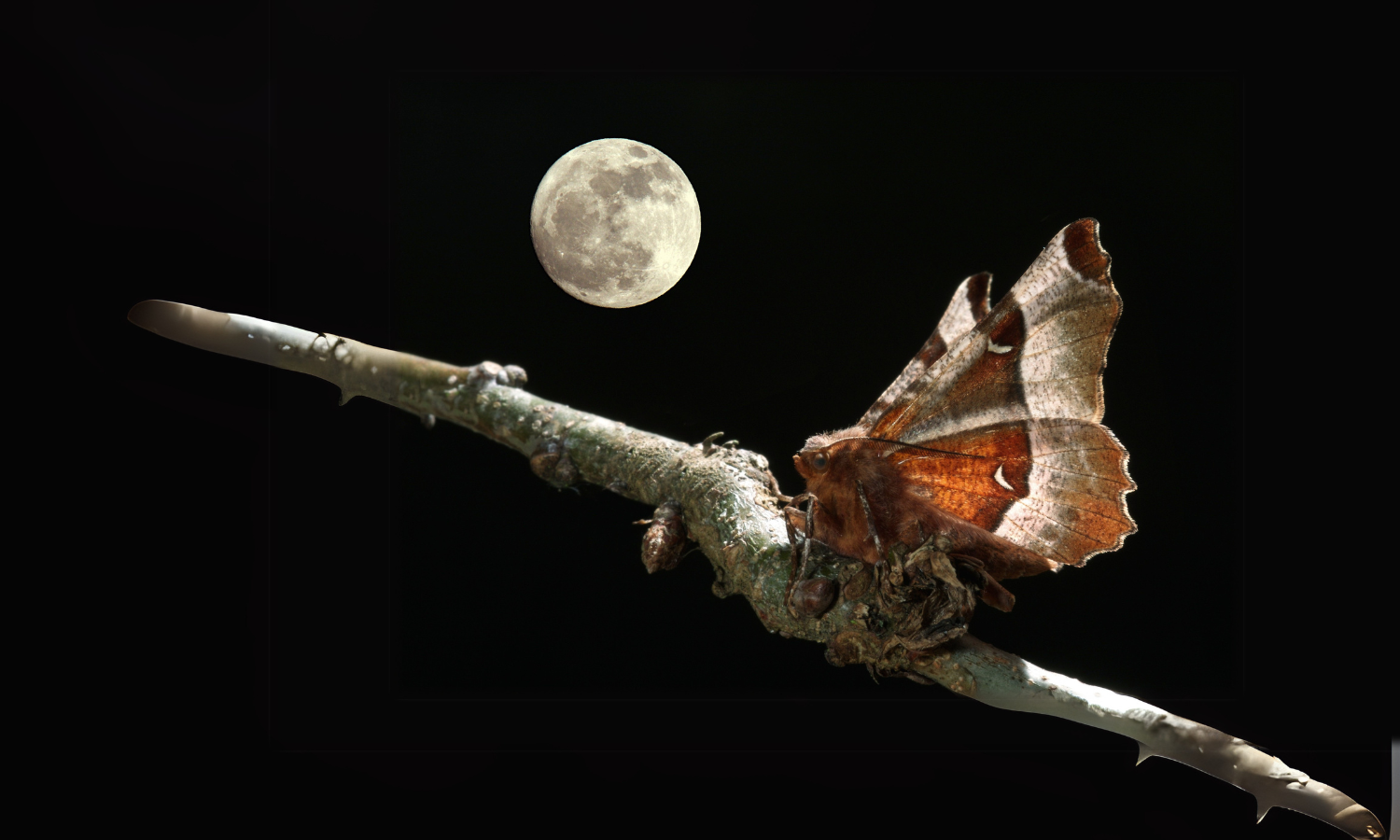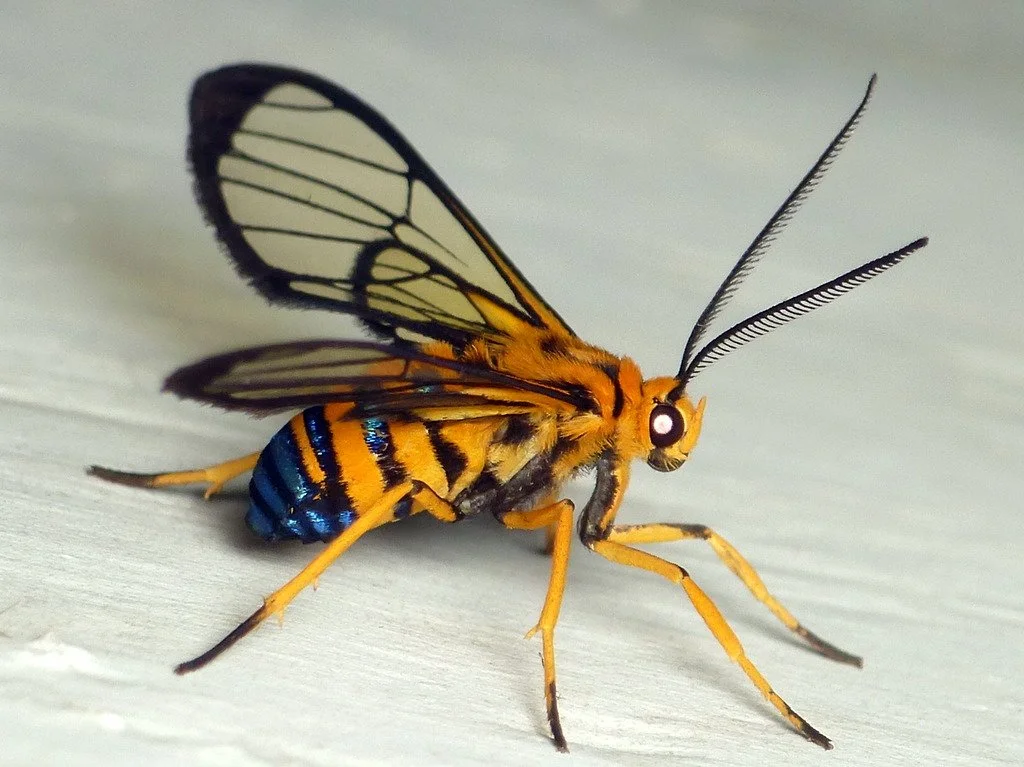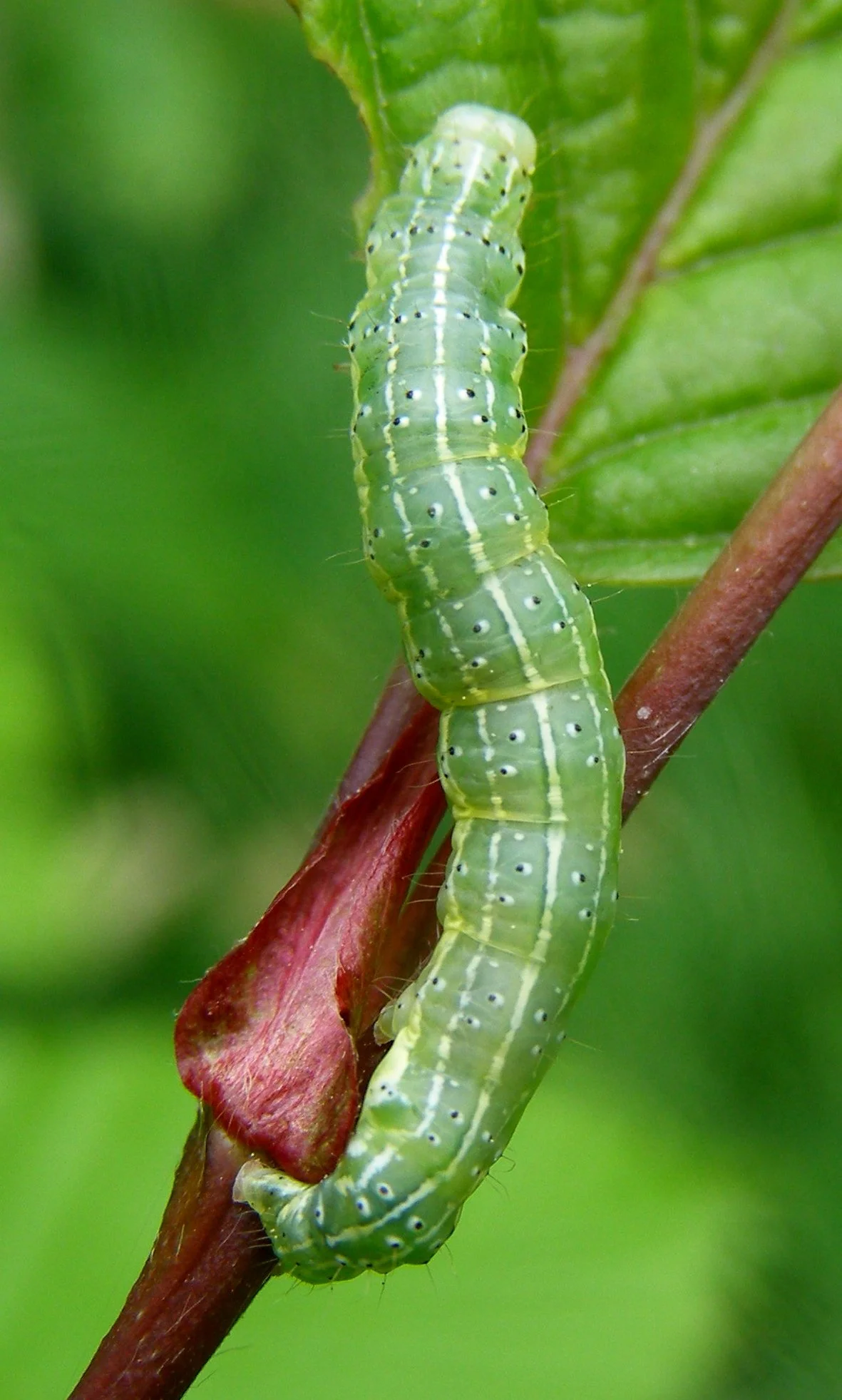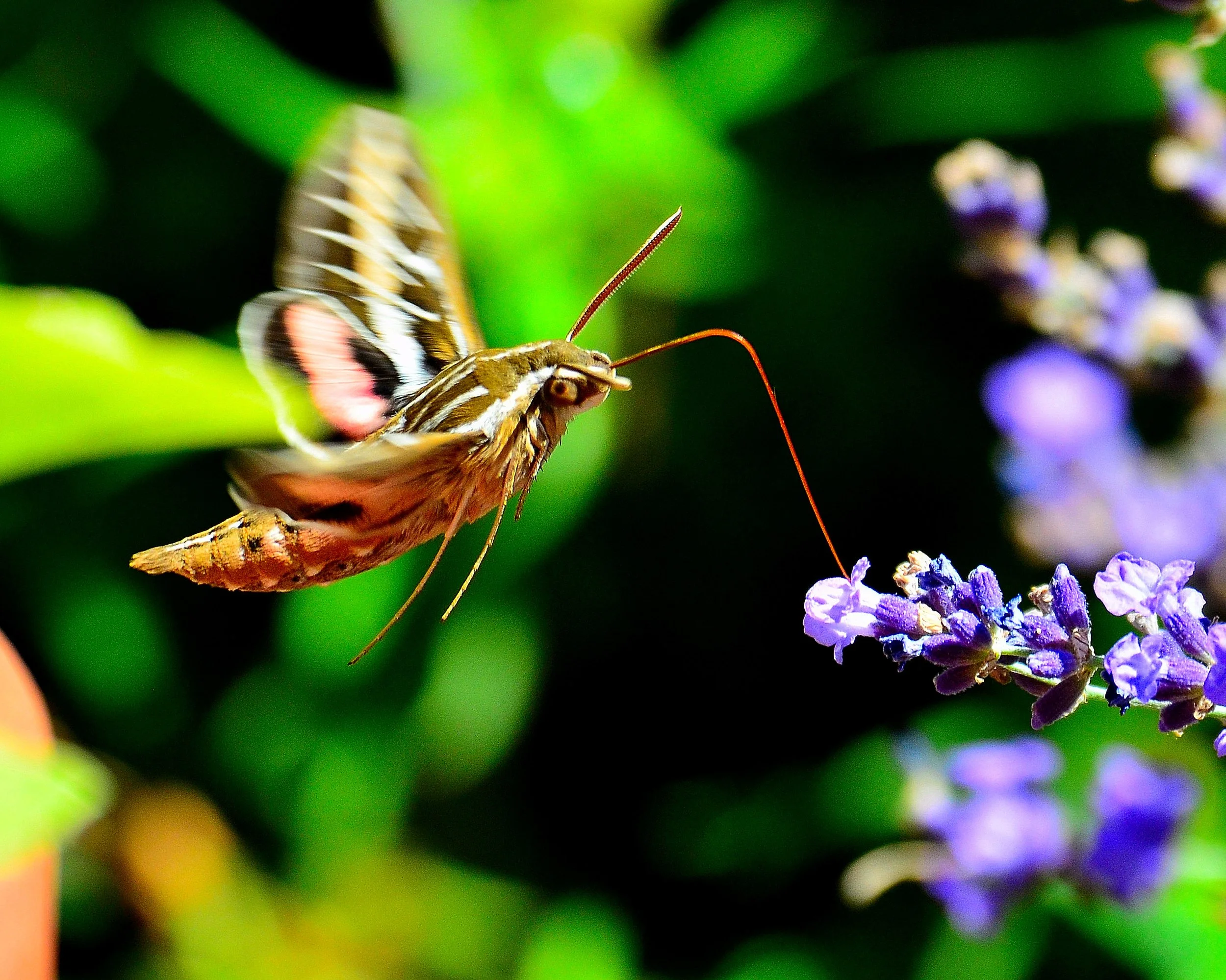40 Reasons You Should Like Moths
When we think of insects, many don’t consider the moth. Yeah they sometimes eat your clothes or get into your mouth when you are biking or running in the evening. But, not only can moths be super cute and cool, but they can even help us out as pollinators. So, if you need to tell your friends and family why they should love moths, here are 40 reasons. And if you are ready to find out first hand, join a National Moth Week event!
Fact 1: There are over 160,000 species of moths—and scientists discover more every year! They outnumber their cousins, the butterflies about 10 to 1.
Fact 2: Moths can be found on every continent—except Antarctica.
Fact 3: Moth fossils date back over 190 million years, making them older than butterflies.
Unique Facts About Moth’s Bodies
Fact 4: The main difference between moths and butterflies? Moths usually have feathery antennae, while butterflies have club-shaped ones.
Fact 5: Male moths possess incredibly sensitive antennae, which are equipped with thousands of finely tuned scent receptors. This remarkable olfactory ability allows them to detect the sex pheromones released by female moths from distances exceeding 7 miles, a feat of long-range chemical communication essential for reproduction. They use pheromones to attract mates—sometimes detectable from miles away. The feathery antennae of male moths are specialized to detect female pheromones.In a unique form of chemical communication, some male moths in the Erebidae family, such as Creatonotos gangis, possess retractable tentacles.
Fact 6: Moth wings are covered in tiny scales that give them color and patterns. Moth colors are not pigments but light refracted by wing scales. If you touch a moth’s wings and it “dusts” your fingers, you’ve rubbed off some of those scales. Their scales repel water, helping them fly in damp nighttime conditions.
Luna moth scales
Fact 7: Some moths have evolved to be completely mouthless as adults. Adult Luna moths and Atlas moths don’t eat—they live off fat reserves from their caterpillar stage and survive only a few days.
Fact 8: Moths lack noses. Unlike humans, moths do not have noses in the traditional sense. Instead, their thousands of smell and taste receptors are distributed across various body parts, including their antennae, feet, and mouthparts. These receptors are crucial for helping moths locate food sources, detect fungal diseases and parasites, and, as mentioned, find mates.
Fact 9: Night blooming plants love them. Moths are particularly attracted to flowers that have evolved to bloom at night. These nocturnal flowers are typically pale or white, emit strong fragrances, and offer copious, often deeply hidden, nectar. Examples include morning glory, tobacco, yucca, and gardenia, all of which rely heavily on moths for their reproductive success.
Fact 10: Better pollinators than bees (at night). Moths play a crucial and often underestimated role in pollinating plants and flowers, particularly during the night. Recent research suggests that moths are, in fact, more efficient nocturnal pollinators than bees are during the day, highlighting a vital ecological service that maintains plant diversity and ecosystem productivity during nocturnal hours.
Fact 11: Not all moths are nocturnal. While most are nocturnal, many species, like the Cinnabar and Scarlet Tiger, are active during the day and can be mistaken for butterflies.
Fact 12: Some moths glow under UV light—a feature used by researchers to track them.
Fact 13: Moths navigate using moonlight, which is why they get confused by artificial lights.
Fact 14: Moths often engage in “puddling”, sipping moisture and minerals from mud, just like butterflies.
Fact 15: Many moths, like sphinx moths, have long, slender proboscises (mouths) that allow them to reach nectar from deep within tubular flowers, a feat some daytime pollinators can't manage.
Fact 16: Some moths are capable of long-distance migration, crossing entire continents. Some moth species are incredible long-distance migrants, traveling thousands of miles across continents. For instance, the Humming-bird Hawk-moth is a regular visitor to the UK, making astonishing journeys all the way from the Mediterranean and even North Africa.
Fact 17: Many moths and their caterpillars are true masters of disguise, having evolved to mimic other animals or objects to deter predators. For example, some caterpillars, like the Chinese Character moth caterpillar, and even adult moths, resemble bird droppings, making them unappetizing targets. When threatened, the Elephant Hawk-moth caterpillar can swell its body to mimic a snake's head, complete with two large black markings that look like menacing eyes, effectively scaring off potential attackers. The Wood Nymph moth also uses bird poop mimicry as a clever way to avoid being eaten.
Fact 18: The Polyphemus moth, a member of the giant silk moth family, displays bold eyespots on its wings. These large, often brightly colored markings are designed to startle and confuse potential predators, giving the moth a crucial moment to escape before an attack can be launched.
Fact 19: Some moths take mimicry a step further by perfectly imitating dangerous insects. The Hornet Moth (Sesia apiformis), for instance, looks exactly like a hornet, complete with similar coloration and body shape, making predators believe it can sting and thus leaving it undisturbed.
Fact 20: One of the most remarkable examples of mutualism in nature involves Yucca plants and specific yucca moths (Tegeticula or Parategeticula genera). Yucca plants are solely pollinated by these moths, and in an astonishing display of intentional behavior, female yucca moths actively gather pollen and "stuff" or "comb" it into the stigma of the flowers. In return, their caterpillars feed exclusively on yucca seeds. This intricate, interdependent relationship is essential for the survival of both species.
Fact 21: Some moths play dead when threatened to avoid predators. Some moths click their wings to disrupt bat echolocation. Some moths have ears on their abdomens that can detect bat echolocation. Moths face a formidable nocturnal predator: bats, which use echolocation to hunt. To counter this, moth wings are covered in fur-like scales that act as "acoustic camouflage". These scales help muffle a bat's echolocation signals, making it significantly more difficult for the bats to pinpoint and capture their prey. Some tiger moths have evolved an active defense against bats, producing ultrasonic pulses that scientists believe confuse the bats' echolocation systems. Even more bizarrely, the Death's-head Hawk-moth is capable of emitting ultrasonic sounds from its penis when alarmed, adding another layer to its acoustic defense. This acoustic arms race highlights the intricate co-evolution between predator and prey. When a bat's echolocation signals indicate it is very close, a night-flying moth may employ a drastic evasive action: it can simply shut its wings and plummet earthwards. This sudden drop, combined with the loss of a clear echolocation target, often allows the moth to escape capture.
Fact 22: Some eat sloth poop! A fascinating example of extreme specialization involves several species of "sloth moths" that have evolved to live in a unique association with sloths. These moths lay their eggs on sloth feces, and after the larvae hatch and develop, the adult moths find a sloth to reside on until it's time to reproduce again. This unusual life cycle highlights the intricate and often surprising interdependencies within natural systems.
Fact 23: Some live in water! Defying the typical image of moths as terrestrial insects, there are genuinely aquatic moth species. Their caterpillars feed on pond plants and can even pupate underwater, sometimes as deep as a meter below the surface. A particularly intriguing example is the Hawaiian "fancy-cased caterpillars," which construct burrito-shaped houses for themselves and can live underwater for weeks without needing to surface for air.
Fact 24: Some eat each other! While the majority of moth caterpillars are herbivorous, feeding on plant matter, some species exhibit a more predatory side. The Dun-bar moth caterpillar, for instance, has been observed engaging in cannibalism, eating other moth caterpillars, including those of its own kind, when the opportunity arises.
Fact 25: Some look like leaves. Moths like the dead leaf moth or lappet moth camouflage perfectly as leaves.
Fact 26: Some have invisible wings! Transparent-winged moths exist—they’re nearly invisible in flight.
Fact 27: Some are bigger than your hand. The Atlas moth of Southeast Asia is one of the largest insects in the world, with a 12-inch wingspan.
Fact 28: Some look like birds. The hummingbird hawk moth can hover like a hummingbird and drinks nectar the same way.’
Fact 29: Some like to scream and can out run you and your bike! The death’s-head hawkmoth has a skull-shaped marking on its thorax—and can squeak, or is it screaming? The death’s-head hawkmoth can reach speeds over 30 mph in flight.
Fact 30: Some drink tears at night. There’s a moth that drinks the tears of sleeping birds and mammals—the vampire moth.
Fact 31: Moth cocoons can be made of silk, dirt, or leaves.
Fact 32: But moth cocoons can be dangerous! Even during their vulnerable, immobile pupal stage, moths are not defenseless. Some species, like the African wild silk moth (Gonometa postica), incorporate urticating (stinging) hairs from their larval stage into the walls of their cocoons. These hairs make the cocoon unpalatable or difficult for invertebrate predators to penetrate, offering a passive yet effective form of protection.
Fact 33: Some moth caterpillars grow bright spines or hair for protection. The puss caterpillar looks cute but delivers a painful sting! The caterpillar of the Cerura vinula moth, also known as the Puss Moth, possesses a rather extreme defense mechanism. When threatened, it can squirt formic acid at attackers, a chemical deterrent that can be quite irritating to predators.
Fact 34: They are in our clothes! The silk used in clothing historically comes from silkworm moths.
Fact 35: Their wings were used to design quieter planes. Moths inspired stealth technology: their sound-absorbing wings are studied for quiet aircraft design.
Fact 36: Some cultures associate moths with death, transformation, or rebirth—and even consider them spirit messengers.
Fact 37: They have starred in major movies. The Death's-head Hawk-moth, with its distinctive skull-shaped pattern on its thorax and its unusual squeaking ability, has notably appeared in Bram Stoker's Dracula, The Silence of the Lambs, and The Mothman Prophecies.
Fact 38: They were studied by NASA. Moth larvae were included in several NASA experiments to study insect development in microgravity.
Fact 39: They are pollution indicators. The Peppered Moth (Biston betularia) stands as one of the best-known and most compelling examples of evolution by natural selection. Its population underwent a dramatic shift from predominantly pale, speckled forms to almost black (melanic) forms during the Industrial Revolution, as soot blackened urban trees and killed off camouflaging lichens. This made the pale moths conspicuous to predators, while the darker forms became better camouflaged and more likely to survive and reproduce. As pollution decreased in later decades, the trend reversed, providing a clear, observable demonstration of rapid adaptation in response to environmental change.
Fact 40: You can eat some moths and their larvae. The bogong moth tastes like peanut butter!











